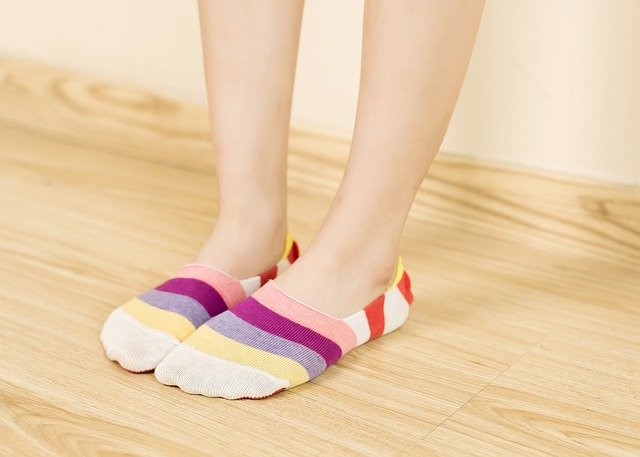Slippers: Choosing Comfortable Indoor Footwear
Slip-on footwear designed for home use can make daily routines more comfortable and protect floors and feet. Slippers come in many materials, sole types, and fits; understanding how they differ from regular shoes, which features support comfort, and how to care for them helps you pick pairs that match your lifestyle and indoor needs.

What are slippers for indoor use?
Slippers are lightweight indoor shoes intended to provide warmth, a soft barrier between feet and floors, and low-impact protection. Unlike outdoor shoes, slippers typically use softer uppers—fabrics, fleece, wool, or soft leather—and flexible soles that prioritize quiet, non-marking contact with floors. For people who spend a lot of time at home, slippers reduce direct foot contact with cold or hard surfaces and can prevent slips on smooth floors when equipped with good traction.
Slippers also vary by purpose: some are purely cozy house shoes for lounging, while others add arch support or a firmer sole to serve as transitional footwear for quick steps outside. Choosing the right style depends on your flooring, climate, and whether you prefer open-back or full-coverage designs for warmth and stability.
How do slippers differ from regular shoes?
The main differences between slippers and shoes are construction, intended use, and durability. Shoes are engineered for outdoor conditions, offering reinforced uppers, sturdy soles, and weather resistance; slippers are optimized for indoor comfort with softer materials and lighter construction. Support levels can differ greatly—many shoes include defined arch support, motion-control features, and shock-absorbing midsoles, while slippers may offer minimal structure unless specifically designed for foot health.
That said, some slippers bridge the gap by incorporating shoe-like elements: molded footbeds, thicker rubber outsoles, or removable insoles for orthotics. When evaluating slippers against shoes, consider how much walking you’ll do, whether you need pronation control or cushioning, and how the slipper’s sole will interact with indoor surfaces.
Choosing slippers for comfort and support
Comfort in slippers depends on fit, materials, and foot support. Look for a fit that secures the heel without pinching the toes, breathable uppers to avoid overheating, and a sole that balances cushioning with stability. Memory foam and layered foam footbeds offer plush comfort but may compress over time; molded or contoured footbeds provide longer-lasting arch support. If you have specific foot conditions—plantar fasciitis, bunions, or neuropathy—seek slippers with firmer arch support or consult a podiatrist for recommendations.
This article is for informational purposes only and should not be considered medical advice. Please consult a qualified healthcare professional for personalized guidance and treatment.
Can slippers be part of everyday footwear choices?
Many people now treat slippers as valid everyday footwear inside the home, especially with trends toward remote work and hybrid living. A durable slipper with a sturdy outsole and supportive insole can function for short outdoor tasks and be used as a comfortable alternative to casual shoes indoors. However, prolonged outdoor use or high-activity situations still call for purpose-built shoes to ensure adequate protection and biomechanics.
For households with children, elderly residents, or guests, having a small selection of slippers with non-slip soles and secure fits improves safety. Consider different pairs for different activities—cozy fleece models for lounging, slip-resistant styles for kitchen work, and supportive varieties for light walking or standing.
Selecting slippers based on materials and footwear features
Material choices strongly influence warmth, breathability, and maintenance. Wool and fleece excel for insulation and moisture management, suede and leather offer durability and a dressier look, and synthetic knits provide lightweight, washable options. Sole materials matter too: EVA and TPU offer cushioning and flexibility; rubber adds traction and outdoor resilience; felt or cork footbeds can combine insulation with contouring.
Other useful footwear features include removable insoles for cleaning or orthotics, adjustable closures for a customizable fit, and reinforced toe or heel areas for longevity. When choosing slippers, weigh aesthetic preferences against practical needs like spill resistance, washability, and compatibility with floor types in your home.
Care and maintenance for lasting comfort
Proper care extends the life of slippers and preserves comfort. Follow manufacturer instructions: many textile slippers are machine-washable on a gentle cycle, while leather or suede models need spot cleaning and conditioning. Air-dry slippers to maintain shape and avoid heat damage from dryers. Rotate between pairs when possible to let materials recover and use moisture-absorbing sachets or occasional airing to prevent odors.
Inspect soles and seams periodically; replace slippers when cushioning collapses or traction wears thin to avoid slips and discomfort. Storing slippers in a dry, ventilated area helps prevent mildew and keeps them ready for daily use.
Conclusion
Slippers are specialized indoor footwear that balance comfort, protection, and convenience. By considering their differences from shoes, prioritizing fit and supportive features, choosing suitable materials, and maintaining slippers properly, you can select pairs that enhance daily comfort and safety at home.






